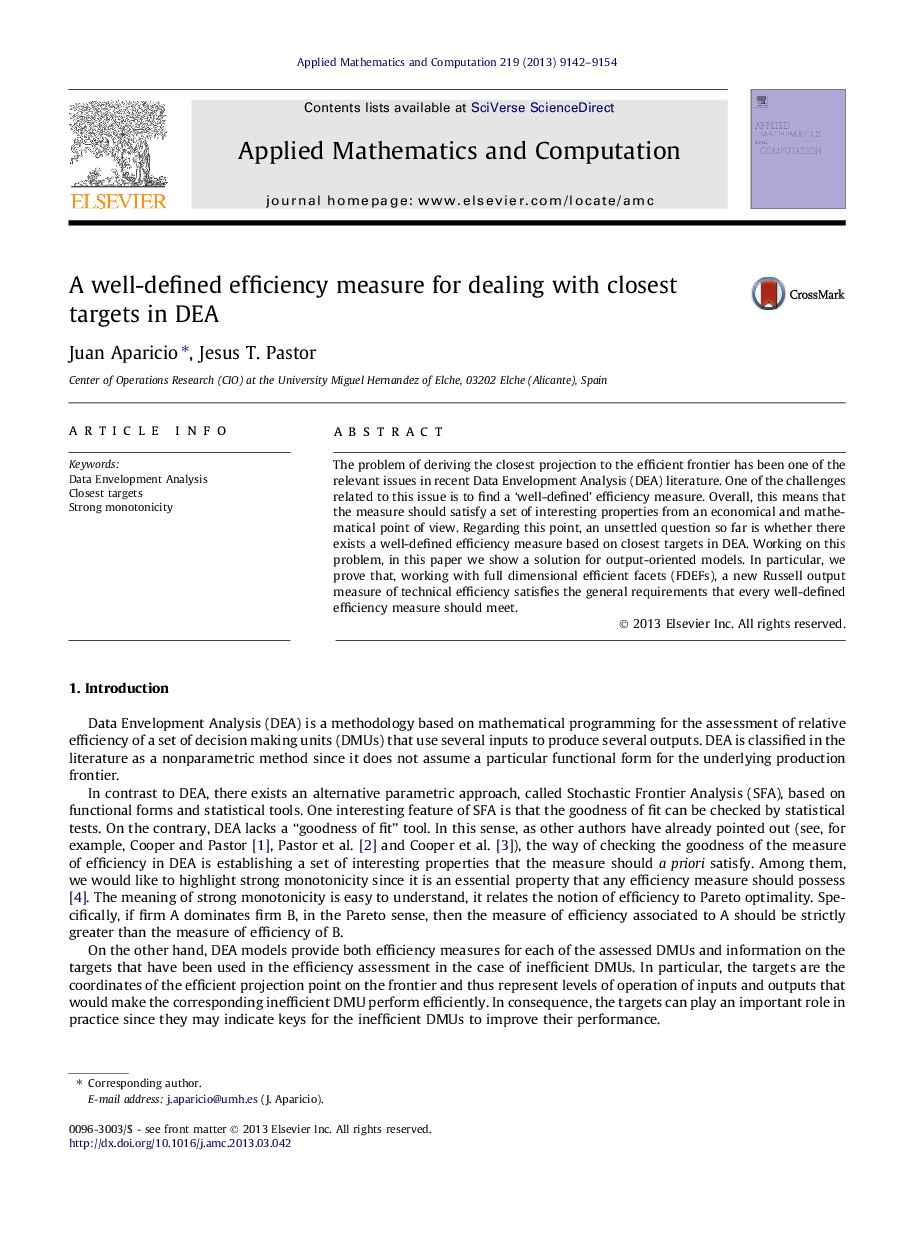| Article ID | Journal | Published Year | Pages | File Type |
|---|---|---|---|---|
| 4629063 | Applied Mathematics and Computation | 2013 | 13 Pages |
•An unsolved question in the Data Envelopment Analysis (DEA) literature is whether there exists a well-defined efficiency measure based on closest targets.•We propose a solution for this question for output-oriented models.•We show that a new definition of the Russell output measure satisfies an interesting set of properties and, consequently, it is well-defined.•In order to proof our results we need to work with full dimensional efficient facets (FDEFs).•Through an empirical example we show that substantial differences between the targets are obtained whether we use the traditional or the new Russell measure.
The problem of deriving the closest projection to the efficient frontier has been one of the relevant issues in recent Data Envelopment Analysis (DEA) literature. One of the challenges related to this issue is to find a ‘well-defined’ efficiency measure. Overall, this means that the measure should satisfy a set of interesting properties from an economical and mathematical point of view. Regarding this point, an unsettled question so far is whether there exists a well-defined efficiency measure based on closest targets in DEA. Working on this problem, in this paper we show a solution for output-oriented models. In particular, we prove that, working with full dimensional efficient facets (FDEFs), a new Russell output measure of technical efficiency satisfies the general requirements that every well-defined efficiency measure should meet.
